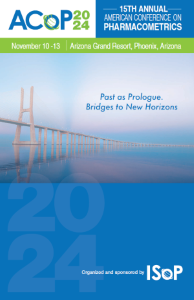Back
Leveraging quantitative models to design and develop the next generation of multi-specific T-Cell engager molecules
Development of a Quantitative Systems Pharmacology Model to Support the Clinical Development of T cell Redirecting Bi- and Tri-specific Antibodies for Patients with Relapsed/Refractory Multiple Myeloma
Tuesday, November 12, 2024
2:00 PM – 2:30 PM MST
Location: Sonoran Sky Ballroom 1 - 4
- JN
Jin Niu, PhD (she/her/hers)
Senior Scientist
J&J, United StatesDisclosure information not submitted.
Speaker(s)
Bispecific T cell redirecting antibodies such as teclistamab and talquetamab have been approved to treat patients with relapse/refractory (R/R) multiple myeloma (MM). A system of ordinary differential equations-based, quantitative systems pharmacology (QSP) model was developed to represent the mechanism of action for these antibodies: through simultaneous engagement of CD3 on T cells and target antigen on MM cells by antibodies to form immunological synapses that activate T cells and drive the T cell mediated killing of MM cells, along with the transport of antibodies and T cells to the tumor microenvironment of MM. A virtual patient population (VP) was generated to represent R/R MM patients by model calibration against clinical data including PK, biomarkers, and treatment responses to teclistamab and talquetamab. The model was applied to explore dosing regimens changes for teclistamab and talquetamab including dose reduction in subpopulation and combination regimens. The calibrated model was also extended to characterize the mechanism of action of a trispecific antibody, estimate the exposure-response relationship and explore sensitive parameters on treatment responses. QSP models can play increasingly important roles in the clinical development of T cell redirecting antibodies.

